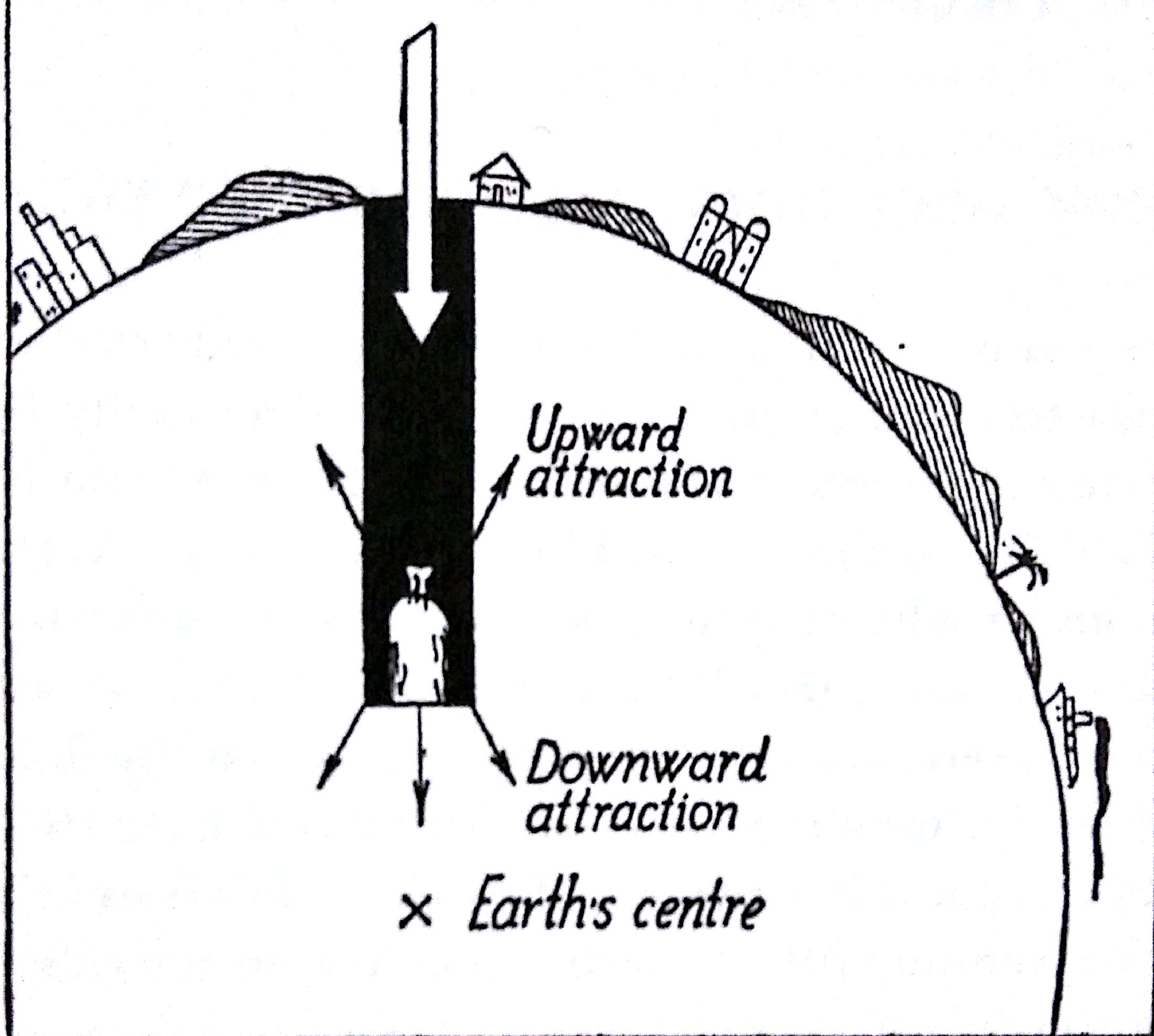Well, I am not a physicist, but I believe the general idea could be correct that you would be lighter near to the core of the Earth than you are on the surface of Earth. Weight is a function of mass and gravitational force. On the surface of the Earth, you have the mass of the core and the mass of all other layers of the Earth's surface providing gravitational attraction to pull you down. If you were capable of putting yourself closer to the Earth's core, then you would only have the gravitational force of the core pulling you "down", and you would have the gravitational force of the other layers pulling you "up" (away from the force of the core). Of course, though, gravitational attraction forces are a measure of distance from the center of an object and the masses of the two objects, so the question here must become this: would that change in distance from the core be balanced enough to reduce "Weight."
For that, let us turn to some rudimentary calculations:
First, let us assume the mass of the Earth is roughly 5.9721986×10^24 kg
Now, let us also assume that the inner core accounts for roughly 1.7% of the Earth's mass and everything between the crust (surface) to the edge of the inner core accounts for the other 98.3% of the Earth's mass.
Then, let us assert that the average distance from the center of the Earth (center of inner core) to the surface is 6,371 km = 6,371,000 m.
Let us further declare that there is a person with a mass of 68.04 kg (~150 lb). Based on F = G*(m1 * m2)/r^2, this becomes (6.674×10^(−11) N · (m/kg)^2) * (68.04 kg) * (5.9721986×10^24 kg) / (6371000 m)^2 = 668.1 N (newtons) = 668.1kg*m/s^2
Furthermore, we can state that the radius of the inner core is 1,220 km = 1,220,000 m
Knowing that the inner-core accounts for roughly 1.7% of the Earth's mass, so we'll calculate this to be 1.015273762×10^23 kg.
To determine the change in force, we must calculate the gravitational force acting on the person at the edge of the core: F = G(m1 * m2)/r^2 = (6.674×10^(−11) N · (m/kg)^2) * (68.04 kg) * (1.015273762×10^23 kg) / (1220000 m)^2 = 309.8 N (newtons) i.e., 309.8kg * m/s^2
Thus, the forces acting on the person (before considering "upward" forces) have changed from 668.1 N to 309.8 N, which means there is a decrease in downward force of 358.3 N.
So, we are already going to see a lower weight due to the decrease in downward force and the upward force will further decrease the weight. However, there are some considerable factors left out in this calculation.
We have failed to consider centripetal acceleration and, unless the person is in a vacuum, the forces of atmospheric pressure (further down = more air above the person = higher atmospheric pressure) and convection (caused by the heat of the Earth's inner-core). We have also neglected to consider the height of the individual relative to the distance from the core; however, that is likely negligible here considering that values of (1220000m)^2 vs. (1220001m)^2 are still relatively close to one another.
As previously stated, though, I am not a physicist, and it has been quite a while since I took a physics course, so my calculations could certainly be incorrect. (Someone please correct me if I am wrong.) However, this is my general view on the proposed hypothetical scenario.

